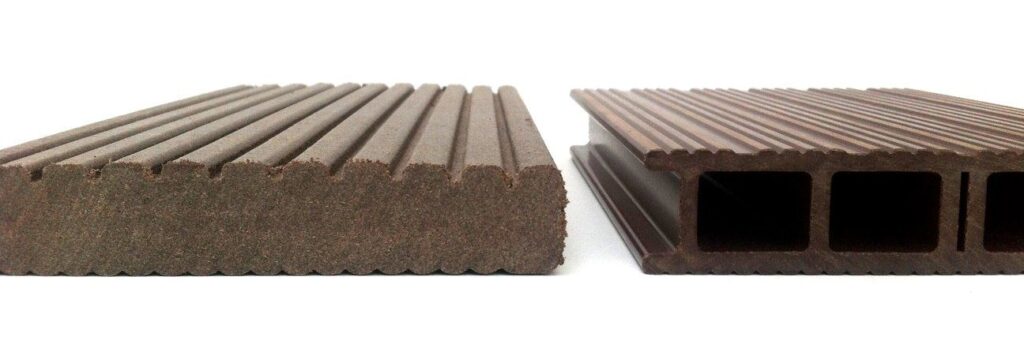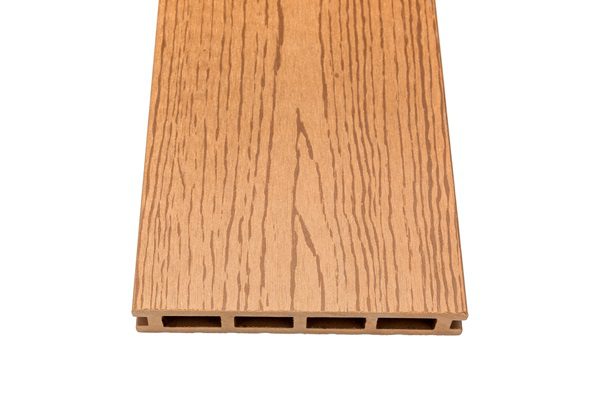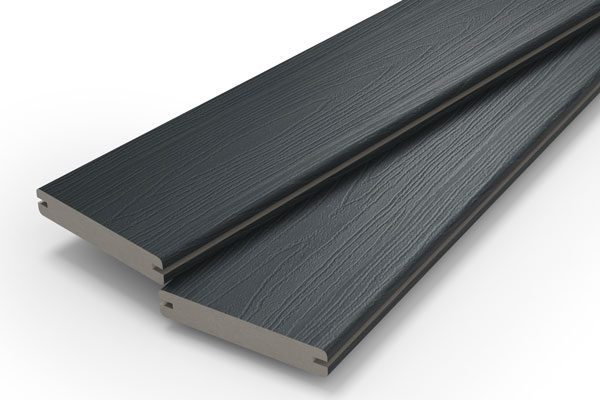When choosing new composite decking it’s important to think about more than just the aesthetics. The quality of composite deck boards can vary massively and their structure and composition has a big impact on their strength, durability and longevity.
There are two main types of composite deck boards available, hollow and solid.
Hollow vs solid composite decking – what’s the difference?
The main difference between solid and hollow composite decking is their construction. Both options have their advantages and disadvantages and it’s important to consider all the facts before making a final decision.
What is hollow composite decking?
Hollow composite decking is exactly that – a composite deck board that has hollow pockets through its centre.

What is solid composite decking?
A solid composite decking board has no hollow centre and is completely solid all the way through.
Advantages of hollow composite decking
Because less material is needed to manufacture hollow deck boards, they’re often cheaper to buy than their solid counterparts. They are often mass-produced in the Far East and are a low cost composite decking option.
They are also lighter than solid composite boards, making them easier to manoeuvre and install – or replace.

Disadvantages of hollow composite decking
Whilst price is definitely their advantage, hollow boards also have some significant disadvantages:
The main downside is their lack of strength and durability. Due to their reduced wall thickness they are less resistant to impact damage, and often don’t last as long as solid boards. In particular, hollow boards are not an ideal choice for commercial areas with high footfall or weight bearing requirements.
Hollow boards can hold moisture and water internally, which is very difficult to remove. This increases the decomposition rate of the board compared to a solid alternative.
Finally hollow boards have unsightly ends which require the use of end caps. These are often made of a different material and therefore weather at different speeds to the rest of the board leaving visible variances in colour.
Advantages of solid composite decking
Many people choose composite decking over timber decking because they want their boards to last longer. But for optimum longevity you need to choose a solid board. Solid composite boards are designed to last, and as such many will come with a longer warranty, providing peace of mind that you have chosen a quality product that will endure.
During installation, solid boards are easier to screw into and will not collapse as the screw drives into the board, unlike a hollow board. Most solid boards also have capped ends in the same material as the board, known as capped composite decking. This creates a clean, coordinated look!
Unlike hollow boards, solid boards do not retain moisture at their core, which helps keep the structure of the board strong and stable.
And finally, solid composite boards offer better noise absorption properties than hollow decking, making it quieter to walk on.

Disadvantages of solid composite decking
Whilst solid decking is more expensive to manufacture than hollow alternatives, in the long run it serves as a better quality board in terms of strength and durability.
If you are still unsure as to which type of decking is most suitable for you, call our friendly team today on 01978 667 840 for a no obligation chat.
